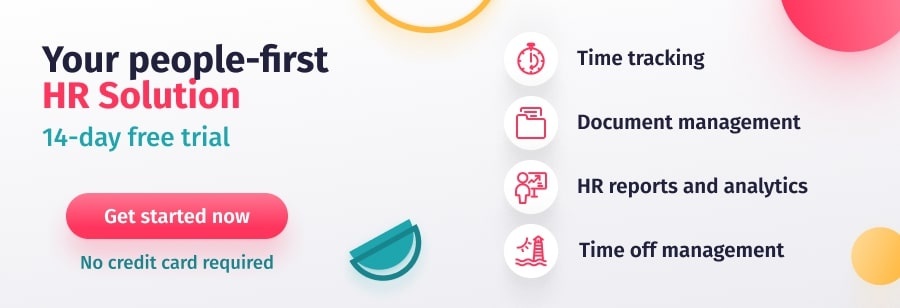Your learning culture has an impact on every level of your business. It affects efficiency, productivity, and profit. It also has a big influence on employee satisfaction and retention. In fact, a study conducted by IBM found that 84% of employees within the best performing organizations are receiving the training they need compared with 16% in the worst-performing companies.
Learning and development matters.
It’s not just about offering training opportunities though. You need to focus on creating a culture of learning that aligns all your employees with the vision, mission and values of your organization.
So, how is this done?
In this post, we will look at the benefits of a learning culture, and what you need to consider when you nurture yours. We will also share 8 vital tips for creating a learning culture in the workplace to help you get started.
What is a Learning Culture in the Workplace?
So, what is a learning culture in an organization?
A learning culture is a set of organizational practices, beliefs, values and processes within a workplace. It is an environment where employees are encouraged to develop their knowledge and skills and they are offered learning and development opportunities that help them perform at their best. This, in turn, helps your organization grow and boosts the bottom line of your business.
A culture of learning supports both independent and shared learning and transformation. It encourages employees to learn and reflect on their work and it promotes a willingness to develop and improve.
Every company has a learning culture. This doesn’t necessarily mean it’s a positive culture, though. This is why it’s important for HR and/or L&D professionals to continuously evaluate their culture to ensure the right structures and systems are in place to support learning and continuous growth.
Before we look at how you can do this, let’s take a look at some of the benefits of nurturing a culture of learning at work.
Why Learning Culture is Important
Ultimately, the biggest benefit of optimizing your learning culture is that it encourages continuous learning and has a direct impact on the performance of your organization.
The benefits don’t end there though.
Benefits of a learning culture:
- Increased efficiency, productivity and profit
- Improved employee satisfaction, motivation and retention levels
- More positive mindset amongst employees
- Employee empowerment, ownership and accountability. Employees are also better equipped to drive necessary changes quickly and efficiently
- Simplifies the process of creating development plans for employees and succession plans
- Promotes the creation of a philosophy of shared knowledge
- An enhanced ability to adapt to change and manage transitions
- Increased capacity to meet organizational business goals.
- Helps you attract top talent
- Finally, it gives your employees the tools they need to be successful and grow your business
An Example of an Effective Learning Culture
Before we look at how to create a learning culture in an organization, let’s take a look at an example of a culture of learning at work.
Google is a great example of an organization that has created a highly effective learning culture.
The technological giant, which has ranked first place on Fortune’s annual “100 Best Companies to Work For” multiple times, has succeeded in nurturing an engaged and motivated workforce that feels it is part of a community and culture. This has helped the company’s employees become more motivated and loyal which, in turn, has increased productivity, lowered absenteeism, and boosted profitability, amongst other things.
So, what is Google doing right?
Ultimately, Google’s success is down to its attitude towards learning. At Google, learning is a right, regardless of role or level. The company understands that the best way to achieve overall success is by securing the success of each individual working there.
Google’s effective learning culture is founded on 4 core beliefs:
- Learning is an ongoing journey, not a final destination. Rather than focusing on one-time events, like workshops and seminars, it promotes learning at spaced intervals (known as the spacing effect).
- Feedback is important. Google understands that employee input is key to building a learning strategy.
- Learning is personal. Google appreciates that everyone learns differently, so it offers learning opportunities that adapt to a variety of learning styles. The company also understands that what employees need to know will depend on their role and level.
- Learning is social. Google supports the belief that peer-to-peer learning is powerful. And that is why it has created the Googler-to-Googler program (g2g). The initiative is a volunteer teaching network of over 6,000 employees who dedicate a portion of their time to helping their peers learn and grow.
How to Build a Culture of Learning in 8 Steps
You can’t create a new philosophy overnight: creating a culture of learning takes time. But you’ve got to start from somewhere, right?
Here are a few actionable steps you can take to lay the groundwork for a highly effective and productive learning culture in your workplace.
How many are you doing already?
Review Your Learning Strategy to Find Learning Gaps and Weaknesses
Before you can start creating a learning culture that benefits both your employees and your organization as a whole, you need to break down and evaluate your existing culture of learning. This means reviewing your current L&D methods: what your employees are learning, how they are learning, and the training materials you provide them with. This will help you identify your current strengths and weaknesses.
You also need to conduct an in-depth training needs analysis to establish what skills you are lacking in your company, and which L&D opportunities will help you meet your organizational goals. You can use Factorial’s skills matrix template to compare current skills with overall objectives.
Make Learning A Core Organizational Value
This is a vital foundation of any learning culture. Your employees need to feel that learning is important to your company and that you support their continued development. The best way to do this is by making it one of your core values. Make a vocal commitment to individual and shared learning and development.
Ask Employees for Input
Ask your employees what they want to learn. This will help you understand what your employees are interested in, what knowledge gaps there might be, and what new skills they think would help them perform better.
You can do this through employee surveys, regular one-to-one meetings, emails, or through a learning management system if you have one. The more information you collect from your employees, the better you will be able to cater to their needs and improve the performance of your business.
Develop Personalized Learning Plans
Make sure you focus on developing personalized learning plans and employee training programs. Tailoring training to the individual needs of each employee will help them engage with the learning process. It will also help your employees believe that you support them and want to help them reach their career goals.
You could even consider implementing a workplace mentorship program if you haven’t already got one. This can be a great way to promote employee growth and professional development.
Make Training Accessible
To make sure your employees embrace L&D, make training as easy and accessible as possible. If you’re using technology, it needs to be user-friendly and intuitive. Incorporating mobile learning is also a great way to encourage your employees to learn whenever and wherever they want.
Whatever platform you choose, it needs to promote an agile learning culture by both facilitating and supporting learning. It should also encourage employees to interact with each other so that you can foster an environment of shared learning.

Ingrain Learning In Your Hiring Process
The best way to create a solid learning culture is to promote your vision as soon as people walk through the door. This means ingraining your philosophy of learning in your hiring and onboarding processes. Introduce new employees to your learning commitments on their first day so that they understand that it is one of your core organizational values.
Integrate Learning into Daily Routines
The best way to create an ingrained culture is to make it part of your everyday routines. You need to promote the idea that learning is a habit. Encourage your employees to dip into training when their workload is light. Train your managers to understand the importance of discussing learning needs and objectives with their teams on a regular basis. Learning doesn’t always have to be formal – a simple chat about an interesting article can be a great learning opportunity.
Encourage Knowledge Sharing & Make Learning Social
Finally, as we saw with the example of Google, one of the best strategies for creating an effective learning culture is promoting shared learning. Encourage your employees to interact with each other and turn learning into a social experience. Motivate them to share resources, ideas, and perspectives.
If you decide to use a learning management system, make sure it has a forum feature so that employees can share information and interact with each other. If you encourage your employees to share their learning experience, they will be far more engaged in the process. This will help you build a strong learning culture that benefits every aspect of your business.


